In his new book, Big Mind: How Collective Intelligence Can Change Our World, Network member and Nesta chief executive Geoff Mulgan draws on multiple discplines to examine the concept of collective intelligence in an era of smart technologies. Mulgan’s book focuses on how groups can work together and yield results that are smarter and more effective than expert individuals working in isolation, but also on questions regarding smart groups armed with the best technology can often make the wrong decisions.
Building on previous work undertaken in the context of the MacArthur Foundation Research Network on Opening Governance, Mulgan expands on the concept of collective intelligence to exmaine the “bigger mind” – i.e., “human and machine capabilities working together.” He argues:
“It now seems inevitable that our lives will be more interwoven with intelligent machinery that will shape, challenge, supplant, and amplify us, frequently at the same time. The question we should be asking is not whether this will happen but rather how we can shape these tools so that they shape us well—enhancing us in every sense of the word and making us more of what we most admire in ourselves. We may not be able to avoid a world of virtual reality pornography, ultrasmart missiles, and spies. But we can create a better version of collective intelligence alongside these—a world where, in tandem with machines, we become wiser, more aware, and better able to thrive and survive.”
The rest of this book is divided into four main sections:
The first section (chapters 1 and 2) maps out the issue and explains what collective intelligence is. I offer illustrations of collective intelligence in practice, outline ways of thinking about it, and describe some of the most interesting contemporary examples.
The next section focuses on how to make sense of collective intelligence (chapters 3 to 10). It provides a theoretical framework that describes the functional elements of intelligence and how they are brought together, how collectives are formed, and how intelligence struggles with its enemies.
Chapters 11 to 17 then look at collective intelligence in the wild along with the implications of the theories for specific fields: the organization of meetings and places, business and the economy, democracy, the university, social change, and the new digital commons. In each case, I show how thinking about collective intelligence can unlock new perspectives and solutions. Finally, in chapter 18, I pull the themes together and address the politics of collective intelligence, demonstrating what progress toward greater collective wisdom might look like.
An endorsement of the book from Network chief of research Stefaan Verhulst shared by Princeton University Press argues, “This book presents a novel way of seeing the world that places collective intelligence center stage. It assesses the practice and evidence on how we might achieve more intelligent institutions and systems, by making the most use of emerging technologies, and by applying more systematic methods to amplifying intelligence in everyday tools for shaping and making decisions.”

